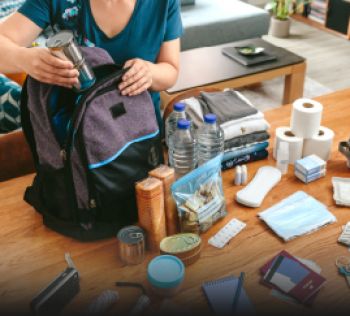Water Leaks
Reporting a leak
If you spot a water leak around town, don't assume we know about it. Please let us know as soon as possible so we can get on with fixing it.
You can use either one of the apps below to report the leak or call our Customer Service Centre on 13 48 10.
Our Customer Service Representatives need as much detail as possible as to where a leak is and if it is in an unusual place, so please make sure you note the name of the street that the leak is on - not just the park name and address.
What we need from you
- Location details (provide exact address, business name, street name, park name, suburb)
- Where is the spill coming from? (front yard, back yard, manhole, pump station, bubbling out of the ground, pipe out of the ground)
- Where is the spill going to? (park, into a lake, creek, river, stormwater, dry creek bed, drain, in the yard of house)
- How much is spilling?
- Does the spill water smell / contain any solids?
- Are there people at the spill location? If so, how many?
A crew will then be dispatched to the location of the leak once the report has been received.
Detecting leaks at home
Leaks can be extremely wasteful and costly. Regularly checking taps, pipes and fittings around your property could save precious water and precious money.
- A dripping tap uses 30 to 50 litres per day
- A leaking pipe uses more than 7,000 per day
- A leaking toilet uses 10 to 260 litres per day
Inside the home
Look in the kitchen, bathroom/s and laundry for dripping taps or leaking washing machine and dishwasher connections. Damp patches on the walls may also indicate a leak.
You can check your toilet cistern for leaks by dropping a dye tablet or a few drops of food colouring in the tank. Do not flush, wait 10-15 minutes, then look for colouring in the toilet bowl. If it's getting through then you have a leak.
Outside the home
Look around your garden at:
- outdoor garden taps/hoses
- garden irrigation (including sprinklers)
- automatic solenoids and manual isolation valves
- exposed pipework
- hot water systems and air conditioning units
- look for damp, uneven brick paving and garden areas the may be moister and greener than expected.
How to check for underground leaks
- Turn off all taps on your property including the irrigation shut-off valve next to your water meter (if you have one)
- Make sure no one is using water
- Take a reading of the water meter
- Check to see if the far right hand dial on the water meter is moving
- Take another reading in one hour - this will be your leakage per hour
- If the reading has not changed, repeat the process with the irrigation shut-off valve open (if you have one)
- If the reading has changed or the dial is moving, contact a licensed plumber to locate and repair the leak.
If the self check doesn’t indicate an underground leak and you believe the meter is faulty, you can contact the Customer Service Centre or email Townsville Water to arrange to have the meter tested. Please note that a fee applies for this service.
Reporting leaks at home
What we need from you
- Turn off the stopcock at the meter and check if the leak is still running.
- Turn all the taps off in the house and yard including toilets and hot water systems, check the main meter to see if the numbers are still ticking over.
- Try to identify where the leak is coming from (front yard / back yard, out of the ground, indoor pipe, outdoor pipe).
- There is an arrow located on the meter near the display dials. The arrow points towards the owners side of the meter, any leaks after this arrow is on the owners side.
If we need to send a crew out to your property, please tell us if there is a dog on the property if the water meter is inside the fence line.





